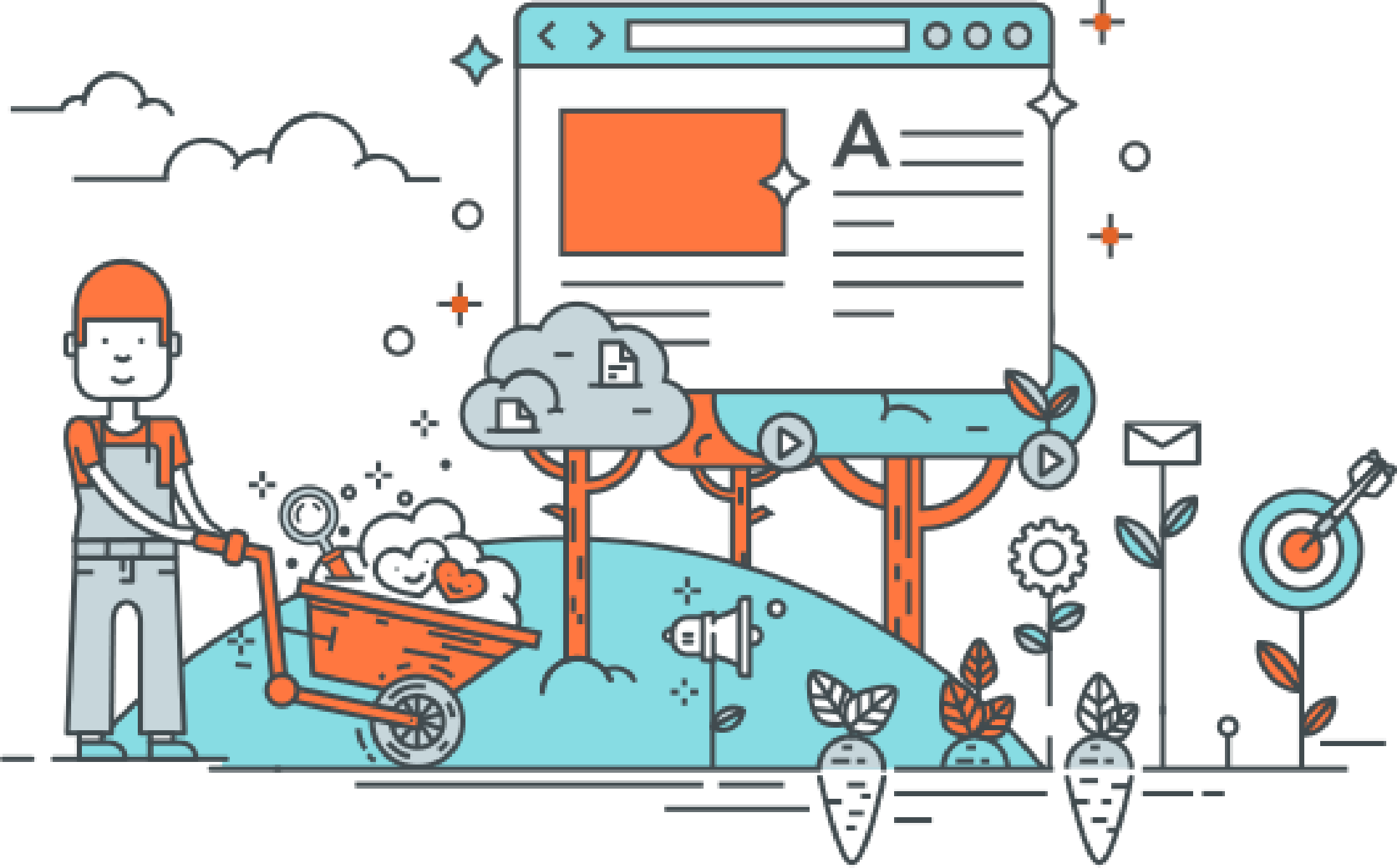There is a famous saying that tells us not to judge a book by its cover, but people do judge your business by your homepage, which is your cover. The homepage is your storefront. It is the first impression visitors get of your business and is the foundation for inbound marketing. It should reflect your business in the best way possible, while also interacting with the visitor to initiate a trusting relationship.
Inbound marketing is all about making the most out of every opportunity to connect with your visitors and getting qualified leads for your sales funnel. Your homepage is the place to make a first impression … and you can only leave a first impression once.
- Brand logo
- “Follow us” buttons
- Search bar
- Social profile links
- Noticeable CTAs (contact us, downloads, request demo, etc.)
- Attractive images and easy navigation (is the customer support page or contact page easily accessible?)
Landing pages are web pages with a single focus: converting visitors into leads. They contain a specific offer or value and make it very clear what the visitor will get from this page: a product demo, an ebook, a coupon, a consultation, or an offer of this nature. In return for an attractive offer, you can capture your visitor’s information through a lead-capture (conversion) form. Landing pages are also great for search engines, because they contain focused and local content on your business, and the more content you have, the higher your digital visibility.
- An action-oriented headline that is the same as your offer title
- Subheader to emphasize the value proposition
- Relevant image
- Well-structured profiling form that is as short as possible (people are more willing to fill forms when they are shorter)
- Concise and catchy summary or copy of your offer
- No navigation menu to distract the visitor from the landing page
- Clear CTA button referencing what the visitor will receive (“Request free consultation” button instead of “Submit”)
- Trust symbols if you are asking for sensitive information such as payment details
Blogs are a substantial piece of inbound marketing, where every new post is an opportunity to get found by the search engines, and prospects, which means posting regularly is essential. The information you provide is long lasting, staying in the digital space until you remove it; therefore it has the potential to bring in leads continuously. In fact, Hubspot notes that 1 in 10 blog posts are compounding, meaning organic search increases their traffic over time.
- An attractive headline
- Section headings
- Featured image
- Short yet informational paragraphs
- Relevant keywords
- Internal links
- Social sharing button
- Comments section and noticeable CTAs (if appropriate)
Statista’s research shows that as of 2016, daily global social media usage amounted to 118 minutes, and that the social outlets are becoming our main communication networks. These figures alone make it inevitable for businesses to own social media accounts. Staying active on these platforms can enable you to engage with your buyer persona and promote and share your amazing content with your followers.
- Set your profile photo as your logo and your company name as the username
- Post regular updates
- Engage with your audience
- Use high-quality images
- Use shortened and trackable links to analyze which pieces of content are attracting more attention
Email is one of the most powerful ways to convert a lead into a customer, and yet it is something that is frequently discounted. Of online customers, 77% prefer to receive permission-based promotions via email, which certainly shows that it is a method of communication to take seriously. To build an email list, make sure to include a signup form on your webpage, blog page and any other page where you think it might be relevant. You can also include a signup form in the footer of your website to appear on all pages. Opt-in new visitors and connect with them whenever you have new content that might interest them: an offer, a product launch, a newsletter or follow-up emails along your conversion funnel. Three-quarters of companies agree that email offers "excellent" to "good" ROI.
- Catchy, attractive subject line
- Recognizable “from” name
- Personalized greeting and short and readable text with clear message
- At least one CTA
- Company branding
- Unsubscribe link
- Social sharing buttons or links




